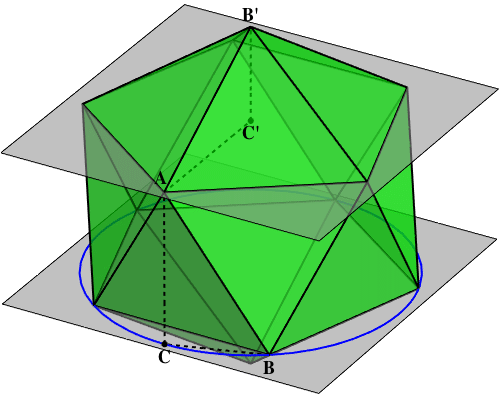This Week’s Finds in Mathematical Physics (Week 284)
Posted by John Baez
In week284 of This Week’s Finds, see Greg Egan’s new proofs of a theorem that goes back at least to 300 BC. One proof uses the fact that these triangles are congruent:

Another uses golden triangles. Then, hear about one day of the special session on homotopy theory and higher algebraic structures at UC Riverside. Categorified quantum groups, the Halperin-Carlsson conjecture, real Johnson-Wilson theories, Picard 2-stacks, quasicategories, motivic cohomology theory, and toric varieties — we got bombarded by all these concepts, and now you will too!
I’ve got a bunch of questions. Can you help me out with them?
- Aaron Lauda wrote: “It turns out, at least in the simply-laced case, that our algebras are also isomorphic to the Ext algebras between simple perverse sheaves on the Lusztig quiver variety. Lusztig’s bilinear form can be seen as taking the graded dimension of this Ext algebra, so it is natural that there is a relationship between the two constructions.” Can someone say more about what’s going on here? Please don’t assume I understand what Aaron told me!
- How does the representation Licata describes, involving the cohomology of the co tangent bundle of the Grassmannians for between and , fit into a more general story? I think the disjoint union of these Grassmannians should be thought of as the space of 1-stage ‘Springer flags’ in dimensions - where an -stage Springer flag is a chain of subspaces of . I vaguely recall that it’s interesting to generalize by letting m be arbitrary. And I think that an even more general story - where we pass from to - involves Springer flags in the category of quiver representations. Is this right? What’s the big picture?
- Is my account of Johnson–Wilson theories accurate? What are the most important things that I left out?
- What’s ‘motivic’ about Voevodsky’s motivic cohomology? Does he propose a definition of motives? How is it related to Grothendieck’s conception of motives? How, from this viewpoint, can we see that motivic cohomology should be bigraded?
- What other things should I have said, but didn’t?

Re: This Week’s Finds in Mathematical Physics (Week 284)
I seem to have broken the UCR website trying to download videos of the talks.